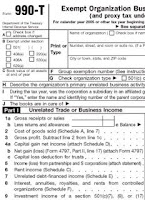Mini-grants are grants for a relatively small amount of money. Some people call a grant a mini-grant if it is for less than $1,000. Others think it’s a mini-grant if it is for less than $10,000. There’s no formal definition, but you get the point, right? Mini-grants are small grants.
Because they are small, they don’t get the respect they deserve. Large grants of $100,000 or more are sexy and get lots of attention, and people clamor to complete proposals for the big grants, but some mini-grant awards are granted with relatively little competition.
Why? People look for a big dollar solution to multiple problems rather than multiple smaller dollar solutions. This is a mistake. It’s like jumping off a boat into the ocean before you know how to swim.
Mini-grants are the wading pools of the grant world. They provide you valuable grant writing experience. When you do well, you are rewarded with a payoff that can help you fund something your organization needs. When you fail, you learn a lesson without having invested hundreds of hours to learn it. And with each failure, you get a little better. With each mini-grant success, you gain a little confidence.
Then you move from the wading pool of mini-grants to the deep end of the big pool, and you apply for some mid-size grants. Success gives you the skill and confidence you need to fish in the big ocean of large grants.
The first grant I wrote was a mini-grant. It was a five page application, and I struggled with it for a week. The 30-75 page applications I write now contain most of the same components as that first mini-grant, but they feel different. The only real difference is that now I know how to “swim.”
So, what’s the real value of a mini-grant? Mini-grants can give you more than a few hundred or a few thousand dollars. They can give you the experience and confidence you need to succeed with larger grants in the future.
That makes them very valuable.
Become a member of grantgoddess.com to have access to Mini-Grant Central in the new CRR Forum!



